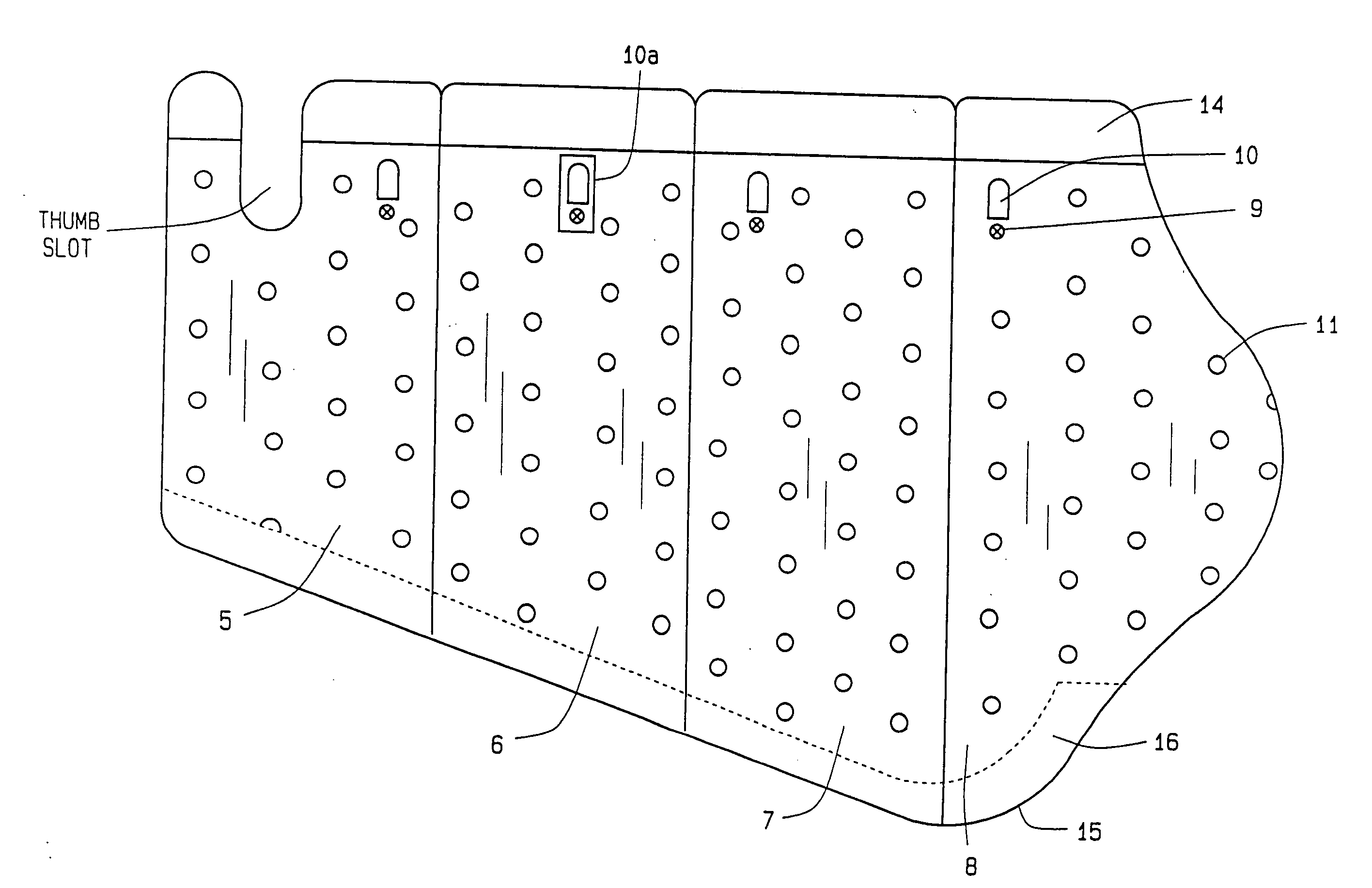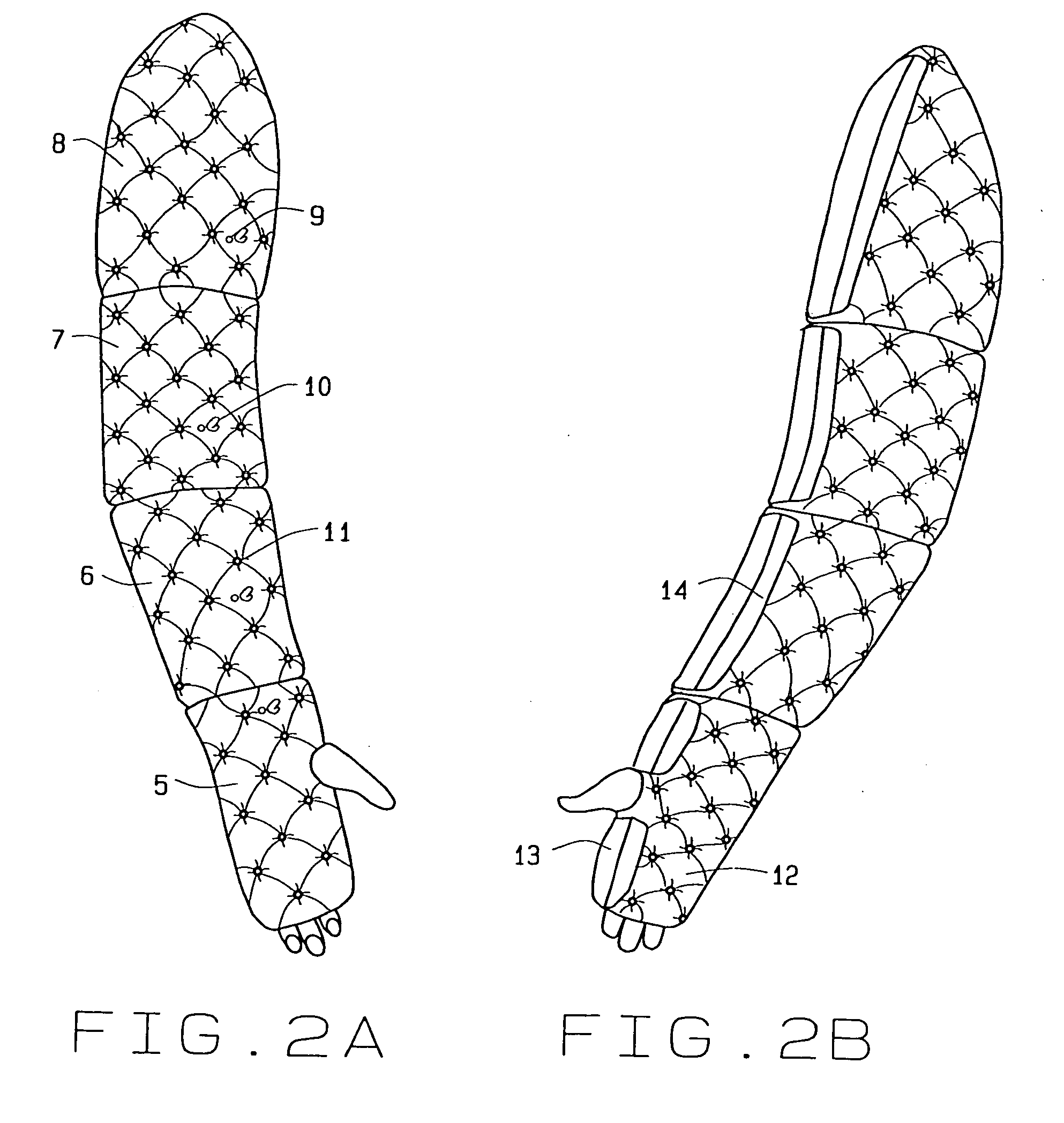Segmented pneumatic pad regulating pressure upon parts of the body during usage
a pneumatic pad and segmented technology, applied in the field of lymphedema treatment, can solve the problems of ischemia, cell death, tissue neurosis, increased time on the operating table, and increased risk of ulcers
- Summary
- Abstract
- Description
- Claims
- Application Information
AI Technical Summary
Benefits of technology
Problems solved by technology
Method used
Image
Examples
Embodiment Construction
[0100]In referring to the drawings, and in particular FIGS. 2 through 4, the compression garment G of this invention is readily disclosed. In this embodiment, it is applied to the forearm, about the wrist, and embraces part of the hand of the wearer or patient. The garment, as can be noted in FIG. 3, comprises and is formed of a flattened configuration, including upper and lower layers 1 and 2 of a fabric-like material, such as nylon, or any other hermetically sealable type of cloth, polymer, or flexible material, and which can be inflated to sustain pressures of air or other fluids to the amounts as previously summarized. As can be seen, the two layers of material are sealed together, by means of a series of grommets 3 throughout their extent, and which provide for segmented pockets, as at 4, of air that provide for a generation of point pressures, to the treated arm, as previously explained. The object for forming these various air pockets, along the length of the compression garm...
PUM
 Login to View More
Login to View More Abstract
Description
Claims
Application Information
 Login to View More
Login to View More - R&D
- Intellectual Property
- Life Sciences
- Materials
- Tech Scout
- Unparalleled Data Quality
- Higher Quality Content
- 60% Fewer Hallucinations
Browse by: Latest US Patents, China's latest patents, Technical Efficacy Thesaurus, Application Domain, Technology Topic, Popular Technical Reports.
© 2025 PatSnap. All rights reserved.Legal|Privacy policy|Modern Slavery Act Transparency Statement|Sitemap|About US| Contact US: help@patsnap.com



